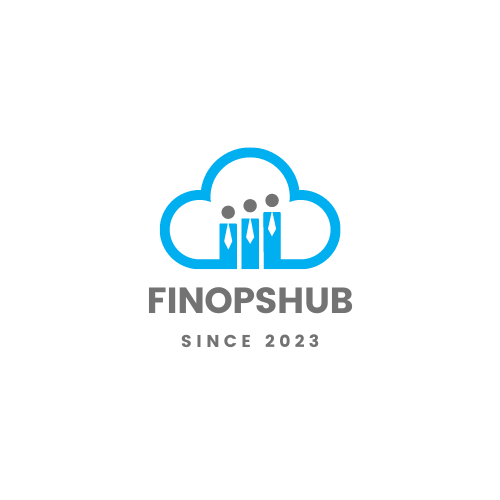The FinOps lifecycle is a continuous journey that helps organizations optimize their cloud financial management. This section explores the phases and activities involved in implementing a successful FinOps strategy.
Phases of FinOps Implementation
The FinOps journey consists of three iterative phases: Inform, Optimize, and Operate (FinOps Framework).
- Inform Phase: This phase focuses on understanding your cloud costs and usage. It involves collecting and analyzing data to make informed financial decisions.

2. Optimize Phase: During this phase, you leverage the data gathered to enhance cloud efficiency and reduce costs.

3. Operate Phase: This phase involves implementing the changes from the previous phases and establishing continuous governance and monitoring.

Activities in Each Phase
To achieve the best results, each phase in the FinOps lifecycle involves specific activities that guide your organization in optimizing cloud usage and spending.
Inform Phase Activities
The Inform phase lays the foundation for effective FinOps practices by gathering and analyzing essential data.
| Activity | Description |
|---|---|
| Identifying Data Sources | Collect data on cloud costs, usage, and efficiency. |
| Budgeting and Forecasting | Develop budgeting capabilities and forecast trends using collected data. |
| Building KPIs and Metrics | Create key performance indicators (KPIs) and metrics to assess the business value of cloud spending. |
For more details on establishing a solid Inform phase, read about cloud budgeting and forecasting and unit economics in cloud computing.
Optimize Phase Activities
The Optimize phase focuses on improving cloud efficiency and reducing costs based on the information gathered in the Inform phase.
| Activity | Description |
|---|---|
| Rightsizing Resources | Identify and appropriately size underutilized cloud resources. |
| Managing Workloads | Optimize the distribution and management of cloud workloads. |
| Automating Waste Elimination | Automate the removal of unused resources to reduce waste. |
You can explore more about rightsizing cloud resources and eliminating cloud waste.
Operate Phase Activities
In the Operate phase, your organization implements and monitors the changes to ensure long-term FinOps success.
| Activity | Description |
|---|---|
| Establishing Cloud Governance Policies | Create policies to guide cloud spending and usage. |
| Monitoring Compliance | Continuously monitor and enforce compliance with established policies. |
| Empowering Teams | Train teams and develop guidelines to embed FinOps practices across the organization. |
For more insights, check out establishing cloud governance policies and cloud cost management platforms.
By understanding and executing the activities within each phase of the FinOps lifecycle, you can effectively manage and optimize your cloud financial strategy. For a deeper understanding of FinOps principles, visit our article on what is finops.
Importance of Cloud Financial Management
Mastering the finops lifecycle is crucial for businesses that rely on cloud computing. Effective cloud financial management not only optimizes cloud costs but also ensures that financial strategies align with operational goals. Two key components of this management strategy are collaboration across functional teams and establishing cloud governance policies.
Collaboration Across Functional Teams
The FinOps framework emphasizes collaboration among cross-functional teams to break down silos between departments and foster a culture of financial accountability (Anodot). By promoting teamwork, you can align business objectives with financial goals, ensuring every department is engaged in optimizing cloud usage. Here are some ways collaboration enhances cloud financial management:
- Clear Responsibilities: Assign specific roles and set clear expectations to ensure every team knows their duties regarding cloud resource management.
- Regular Meetings: Conduct periodic meetings between finance, IT, and operations teams to discuss cloud spending and identify areas for cost optimization.
- Shared Objectives: Establish common goals that bridge departmental divides, such as reducing cloud waste or improving the efficiency of cloud usage.
Using cloud cost management tools can support FinOps practices by providing insights into cloud consumption and billing, enabling you to correlate usage with projects and users. This allows for better optimization of cloud usage and costs (Spot.io).
Establishing Cloud Governance Policies
Creating robust cloud governance policies is essential for managing cloud resources efficiently. Policies help in delineating how resources are allocated, ensuring compliance, and promoting best practices throughout the organization. Here are some aspects to consider when establishing these policies:
- Access Controls: Define who has the authority to provision and manage cloud resources. This helps in preventing unauthorized usage and ensuring accountability.
- Budget Limits: Set budget constraints for different departments or projects. This ensures that spending remains within limits and encourages teams to optimize their usage.
- Compliance and Security: Implement policies that comply with industry standards and regulations, safeguarding your data and ensuring that your cloud practices are secure.
To address challenges such as cultural resistance to change and lack of FinOps expertise, engaging with domain experts and conducting thorough training for teams can be effective. For instance, a FinOps team identified significant savings by working closely with engineering teams to optimize instance types according to workload requirements (FinOps Foundation).
Here is a comparison of the key areas of cloud governance policies:
| Policy Aspect | Description | Purpose |
|---|---|---|
| Access Controls | Manage who can provision and manage resources | Prevent unauthorized usage and ensure accountability |
| Budget Limits | Set financial constraints for departments | Keep spending within limits and encourage cost optimization |
| Compliance & Security | Adhere to industry standards and regulations | Safeguard data and ensure secure cloud practices |
Establishing clear governance policies and fostering a collaborative culture are both integral parts of the finops lifecycle. Enhanced collaboration and sound governance contribute significantly to optimizing cloud resources and financial management, positioning your business for scalable growth and innovation.
For more details on managing cloud costs effectively, visit our articles on 10 cloud cost reduction strategies and rightsizing cloud resources.





